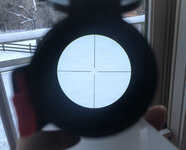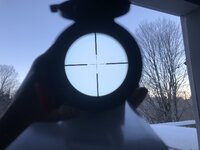Holding wind without a mark is an extremely poor way to deal with it and results in the most off call and off hits of any technique.
Dialing wind off a standard flat range on live animals that can move, and with wind that changes constantly (mountains/broken terrain) is worse than holding wind in a reticle. That’s easily provable and has been done over and over. Dialing wind for practical purposes is not the way. It’s slow, error prone, and there is no way to consistently and reliably work with changes in wind without redialing.
Holding MOA in the reticle works, can work well, yet is not as intuitive to use compared to Mils, and does not have the same capability in a quick, effective way to know your wind holds in the field, without a ballistic program and without ever having shot the rifle.
In actual tested field shooting for speed and hit rates, FFP mil/mil has no equal. I don’t even have to have ever shot your rifle to know what your wind holds are out to 600+ yards, or for most what your elevation holds are. You can make elevation and windage corrections on the fly, and do so quickly and intuitively.
This is not based on a limited sample size, or personal preferences or beliefs, but instead on hundreds of thousands of rounds fired by hundreds of shooters in all environments. It is such a dramatic difference between the techniques that it takes only a few minutes in the field to prove it to the most hardcore MOA shooter alive.


